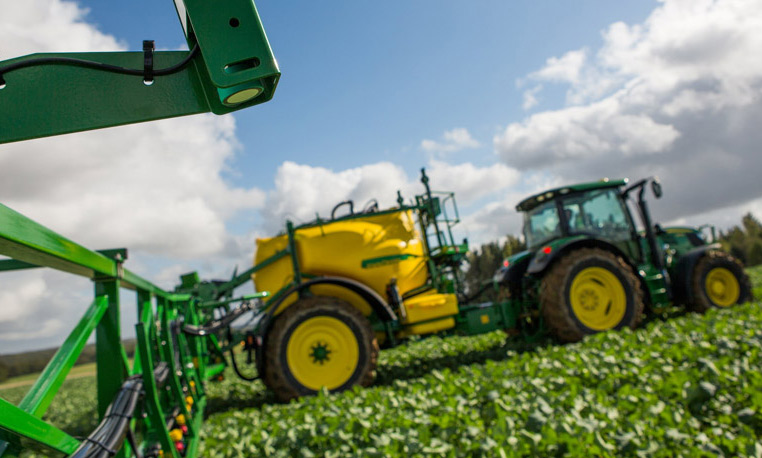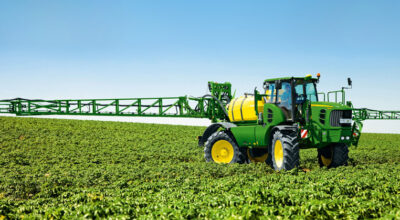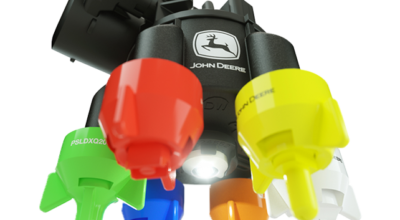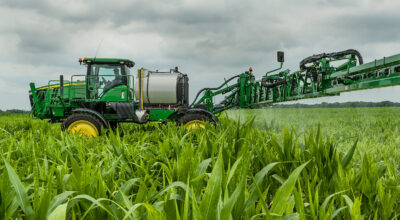Row-crop producers spend many long days out in the field during the planting season in an effort to prepare their fields for success. Once the seeds are in the ground and crops begin to emerge, they become susceptible to a number of threats posed by insects, diseases, and more. To defend against these threats, producers will often take to the fields with spraying equipment loaded with appropriate nutrients or pesticides.
We’ve put together a list of ten crop spraying tips that will help producers reduce spray-drift and maximize the return on their spraying investments.
1. Identify the need and start planning: Crop producers should only spray their crops when it becomes a necessity. Often times, crops are in the ground and insects or disease take hold, damaging the integrity of the crop and forcing the farmer’s hand. Cost-benefits analysis should be run to weigh the financial impact of the damage against the costs of purchasing solutions and spraying equipment. After the need has been identified, evaluate what types of crops and issues need to be treated and determine what nutrients or chemicals need to be purchased.
2. Select appropriate nozzles: Nozzles come in a wide variety, producing fluctuating droplet sizes. Nozzles that produce droplets that are as large as practical should be selected, as larger droplets are less likely to drift off-target and hit areas of the field (or other fields) that are not intended to receive applications.
3. Designate untreated areas for checks: Much like any effective experimental process, there should always be a controlled variable. Untreated areas of fields that are undergoing nutrient or pesticide application provide a great way to evaluate the results in terms of pest control, crop damage, or crop development. This process can be especially beneficial for those applying new solutions to the field.
4. Be conscious of wind direction: The wind is a critical component in reducing spray drift. On a windy day, spray can hang in the air and be taken to undesired locations of the field. Calm, sunny days are ideal for crop spraying as the spray will fall directly downward to their intended target. If spraying needs to be done in a bit of wind, be wary of its direction and prepare the day’s work accordingly.
5. Be speed-conscious: Finding a speed that is appropriate for the terrain and will deliver a steady application to the surface is ideal. While faster ground speeds allows producers to cover more acres, it will also cut application rate. Adversely, traveling too slowly while spraying could cause over-application of solutions.
6. Check the boom height: When it comes to boom height, it’s ideal to spray as close as possible to reduce drift but also far enough away to allow for proper overlapping and coverage. Remember, the higher the boom height, the greater the opportunity for wind to carry the droplets away from the intended target. Check pesticide or nutrient labels for suggested heights.
7. Avoid sharp turns while spraying: Spraying while making turns can be detrimental to the process. Spraying in a straight line is optimal and when turns are necessary, sharp turns should be avoided, as the areas below the inner boom and pivot position will be subject to over-application.
8. Be prepared for anything: As producers are well-aware, a day’s work doesn’t always go according to plan. To combat breakdowns, clogs, or breaks in equipment, always be prepared for a day of spraying by carrying extra nozzles, washers, other spare parts and tools that could come in handy if needed.
9. Re-calibrate the sprayer: To protect producers’ investment in agricultural pesticides, sprayers should be calibrated not only at the beginning of the season, but periodically throughout the season and whenever application conditions change.
10. Keep written records of spraying: Written records and documentation of spraying allows producers to keep track of the last time an application was used and also protect against pesticide drift accusations (if necessary). Some things to note include the date of spraying, weather conditions, materials used, and reason for spraying.
Hopefully these tips will be useful for those enduring the crop spraying process, fighting against disease and applying nutrients to achieve profitable results. If you enjoyed this post or want to read others, feel free to connect with us on Facebook!






